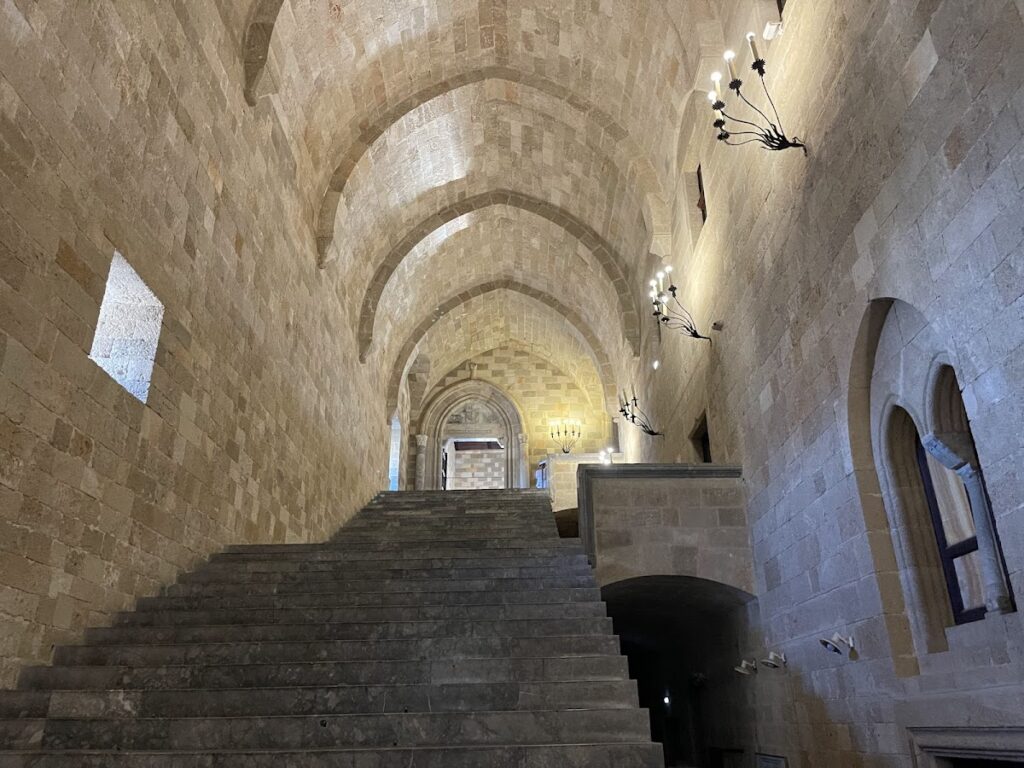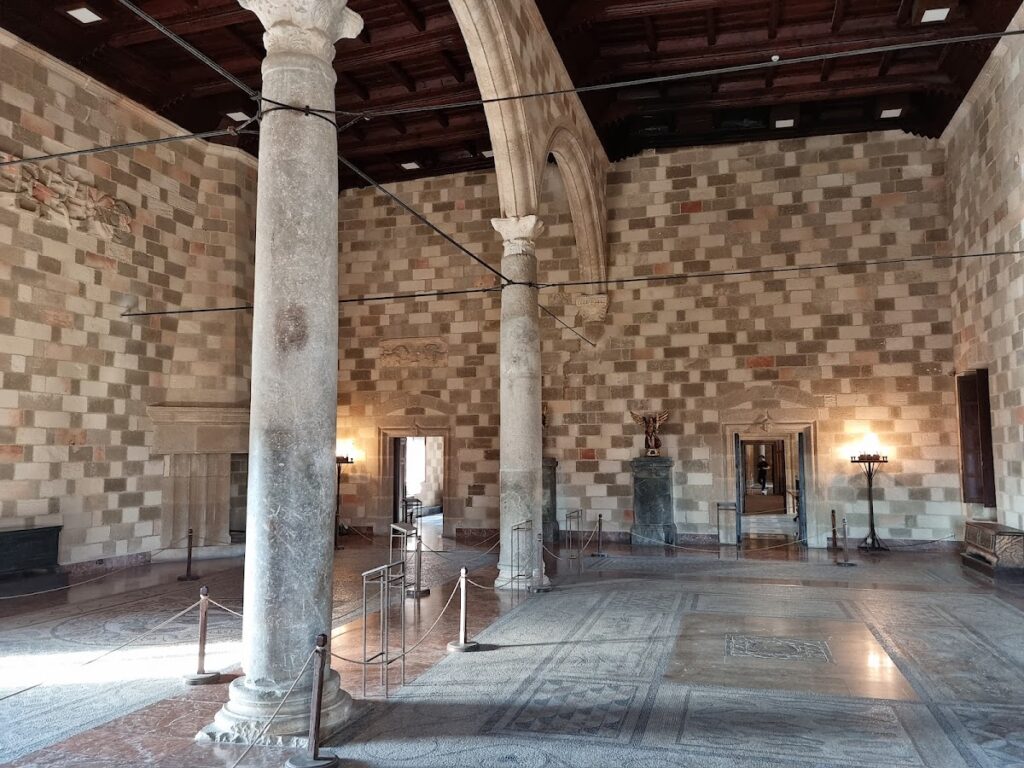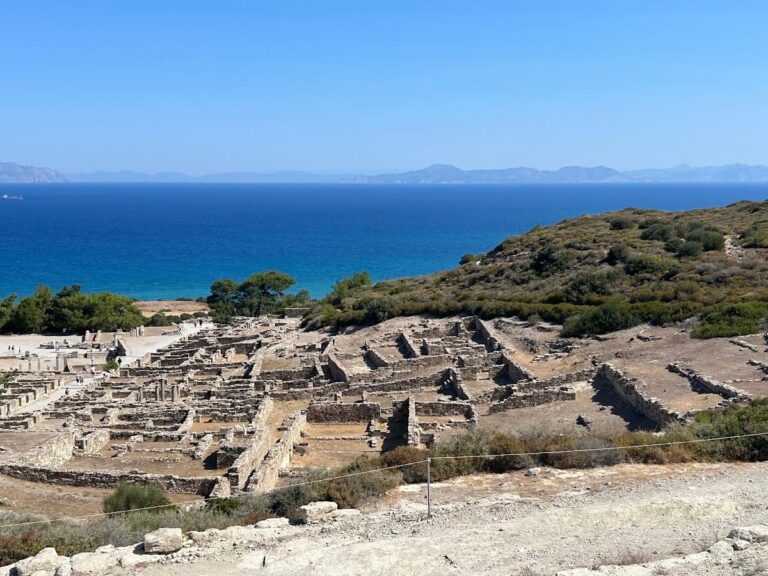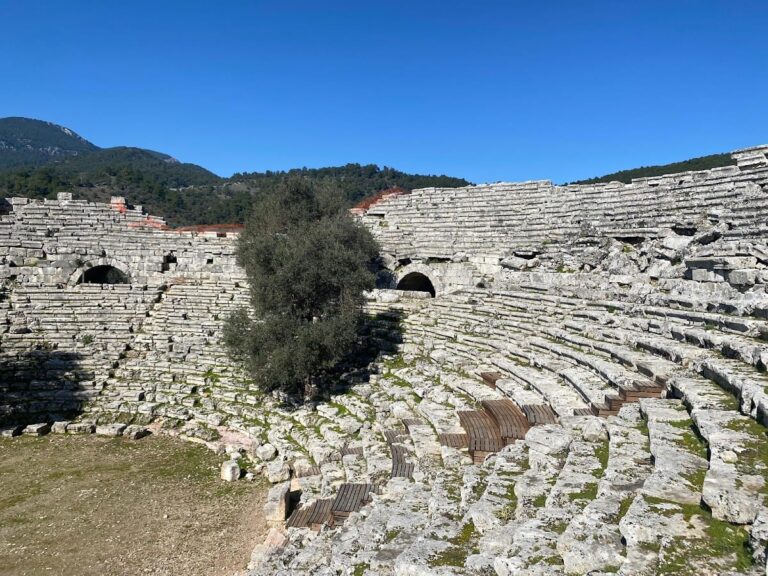Palace of the Grand Master of the Knights of Rhodes: A Historic Fortress in Greece
Visitor Information
Google Rating: 4.6
Popularity: Very High
Google Maps: View on Google Maps
Official Website: www.oldtownrhodes.com
Country: Greece
Civilization: Unclassified
Remains: Military
History
The Palace of the Grand Master of the Knights of Rhodes stands in the municipality of Rhodes, Greece. This historic fortress dates back to Byzantine times and was later transformed by the Knights Hospitaller, who made it their administrative center and residence.
The origins of the site trace to an ancient temple dedicated to Helios, the sun god, believed to occupy the location where the famed Colossus of Rhodes once stood. While earlier scholars thought the colossal statue was near Mandraki harbor, current evidence supports its placement on the palace’s foundations. In the late 7th century, a Byzantine citadel was constructed atop these foundations, providing a defensive stronghold for the city.
The palace gained new prominence after 1309 when the Knights Hospitaller conquered Rhodes and the surrounding islands. They extensively repaired and enhanced the fortress early that century, turning it into the heart of their rule. The structure suffered heavy damage during an earthquake in 1481 but was quickly restored to maintain its role.
Following the Ottoman conquest in 1522, the palace shifted purpose to serve military and administrative needs of the new rulers. However, a dramatic event in 1856 profoundly affected the building: lightning struck the nearby Church of Saint John, triggering a gunpowder explosion that destroyed much of the palace and caused the collapse of most upper floors.
During Italian rule from 1937 to 1940, the palace underwent significant reconstruction directed by architect Vittorio Mesturino. Instead of rebuilding strictly based on original structures, the restoration invoked a medieval Italian style, incorporating new design elements. This intervention included demolishing Ottoman additions and resulted in a version of the palace that mixed original foundations with imaginative reconstructions. The palace was then used as a summer residence by King Victor Emmanuel III and Benito Mussolini, whose name appears on a plaque near the entrance.
After World War II and the transfer of the Dodecanese islands, including Rhodes, to Greece in 1948, the palace was declared a UNESCO World Heritage Site. It was converted into a museum showcasing artifacts from medieval and ancient times. In 1988, the palace hosted a summit of European Economic Community leaders during Greece’s presidency, underscoring its ongoing cultural and political importance.
Remains
The palace is a prominent medieval Gothic-style fortress occupying the highest point of Rhodes’ old city, forming part of a larger defensive complex. This complex includes various gates, bastions, and towers designed to protect the harbor and city from attack. Its medieval framework rests on ancient foundations, blending different phases of construction and restoration.
Built initially as a Byzantine fortress on the site of an ancient temple, the palace’s layout is heavily fortified. Although the devastating explosion in 1856 demolished most of the upper stories, the ground floor survived intact. The Italian restoration in the twentieth century produced a structure reflecting medieval Italian architectural models rather than faithfully replicating the original design. This includes notable alterations aimed at adapting the palace for contemporary functions, such as residential use.
Within the palace, the first floor today serves as a museum displaying a diverse collection. Exhibits include medieval tombstones, weapons, jewelry, paintings, sculptures, and folk art spanning from antiquity through the Middle Ages, connecting visitors to the varied cultural history of Rhodes.
The wider fortifications around the palace comprise several key elements. The Bastion of Saint George and Bastion del Carretto are prominent defensive points. Towers such as the Naillac Tower, the Windmills Tower (also known as the French Tower or Angel Tower), and the Fort of Saint Nicholas contribute to the comprehensive protection of the city and harbor. These structures demonstrate the complex military architecture developed to secure Rhodes throughout its medieval and early modern history.
A distinctive feature connected to the palace’s twentieth-century history is a large plaque near its entrance bearing Benito Mussolini’s name, reflecting its use as an official residence during Italian rule. Despite changes over centuries, the palace retains its historical layers through these surviving and restored elements.








